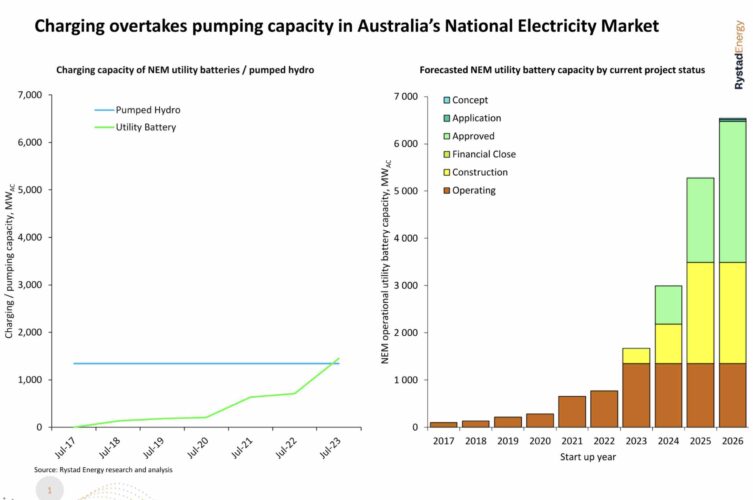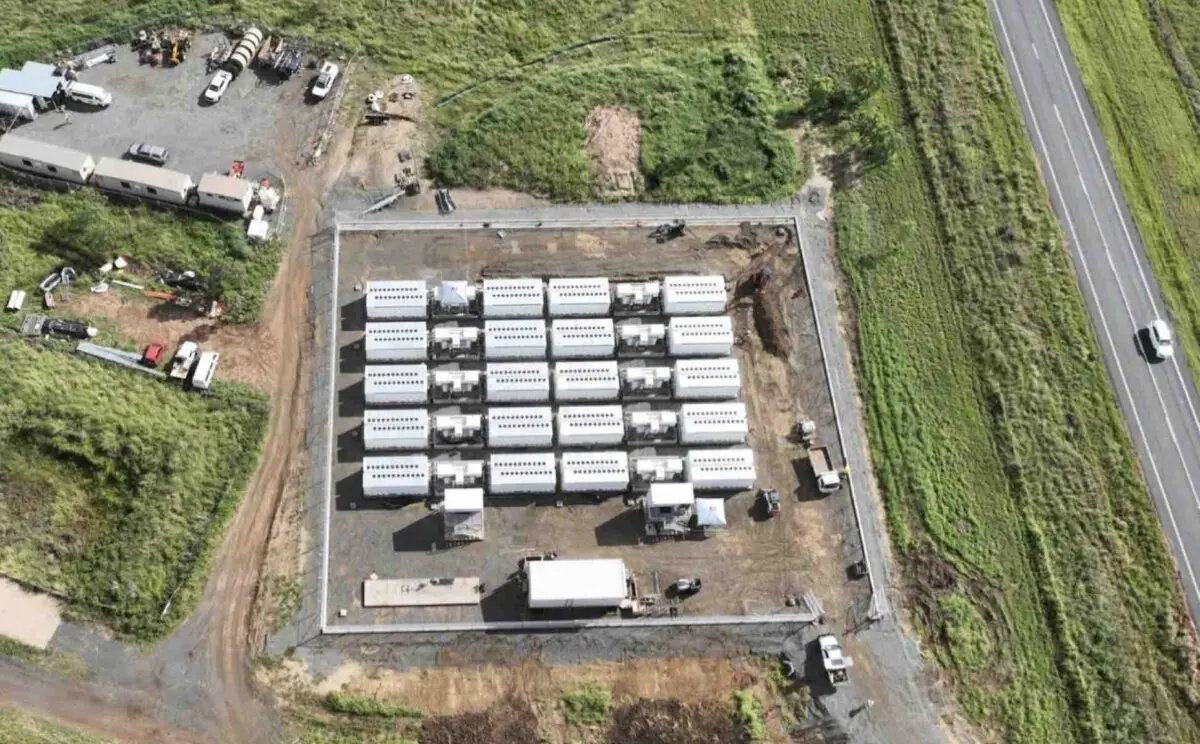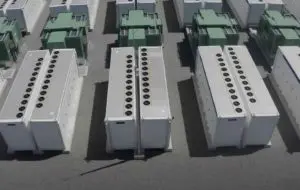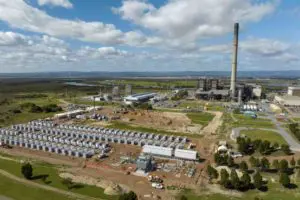The charging capacity of big batteries in Australia’s main grid has overtaken that of pumped hydro following the connection of two new battery projects – the Capital big battery in the ACT and the Bouldercombe big battery in Queensland.
According to data from Rystad Energy analyst David Dixon, the operational charging capacity of big batteries in the National Electricity Market now stands at 1451 megawatts (MW), compared to 1,340MW for pumped hydro.
Two new big battery projects have just been “energised” – in broad terms connected to the grid – although they are still to work through their full commissioning process, which could take several months.
These new batteries are the 100MW/200MWh Capital battery in the ACT that has been built by French developer Neoen, and the 50MW/100MWh Bouldercombe battery built by Genex Power in Queensland.
Other new battery projects to join the grid in recent months include the 250MW/250MWh Torrens Island big battery and the 41MW/412MWh Tailem Bend battery, both in South Australia, the 150MW/150MWh Hazelwood battery in Victoria, and the Riverina battery complex in NSW.

The gap between battery storage capacity and pumped hydro is illustrated in the above graph from Rystad Energy, which shows the green line (battery), popping up above the blue line (pumped hydro).
That gap will widen in coming years, the table on right illustrates, with up to 6GW of new battery capacity (with varying levels of storage) to be built over the next three years.
Projects already under construction include the 850MW/1680MWh Waratah Super Battery in NSW, the 200MW/400MWh Blyth battery in South Australia, and Neoen’s newly expended 260MW/520MWh Western Downs battery in Queensland.
Origin Energy has also committed to the 460MW/920WMh first stage of the Eraring battery in NSW, and numerous other batteries are about to begin construction after winning key tenders or long term contracts.
Late last week, the Australian government committed to 6GW and 24GWh of new storage through its Capacity Investment Scheme, with much of the new capacity to come from battery storage, although various programs are looking to help pumped hydro projects.
Genex is building the 250MW (eight hour) Kidston pumped hydro project in north Queensland, the first of its type in nearly four decades, while the federal government owned Snowy Hydro is working on the heavily delayed 2000MW (175 hours) Snowy 2.0 project, now not likely to be fully operating before 2030.
The Queensland government is also working on two massive pumped hydro projects in that stage – at the massive 5,000MW Pioneer-Burdekin and the 2,000MW Borumba schemes.
See RenewEconomy’s Big Battery Storage Map of Australia










